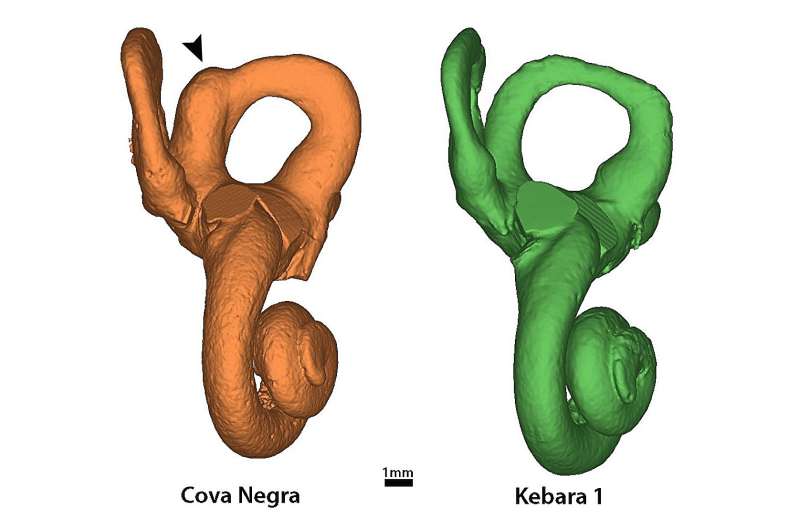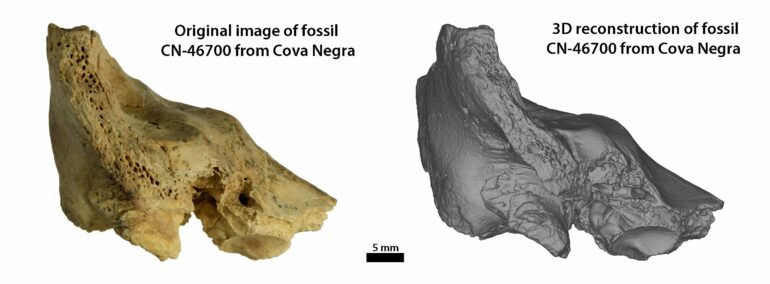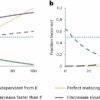A new study published by an international multidisciplinary team of researchers including faculty at Binghamton University, State University of New York, documents the first case of Down syndrome in Neanderthals and reveals that they were capable of providing altruistic care and support for a vulnerable member of their social group.
The research, led by anthropologists at the University of Alcalá and the University of Valencia in Spain, studied the skeletal remains of a Neanderthal child, whom they affectionately named “Tina”, found at Cova Negra, a cave in Valencia, Spain long known for yielding important Neanderthal discoveries.
The paper is published in the journal Science Advances.
“The excavations at Cova Negra have been key to understanding the way of life of the Neanderthals along the Mediterranean coast of the Iberian Peninsula and have allowed us to define the occupations of the settlement: of short temporal duration and with a small number of individuals, alternating with the presence of carnivores,” said University of Valencia Professor of Prehistory Valentín Villaverde.
The researchers created micro-computed tomography scans of a small cranial fragment of the right temporal bone, containing the ear region, to reconstruct a three-dimensional model for measurement and analysis. Tina suffered from a congenital pathology of the inner ear associated with Down syndrome, which causes severe hearing loss and disabling vertigo. This individual survived to at least 6 years of age, but would have required extensive care from other members of their social group.

3D model of the inner ear of fossil CN-46700. © Science Advances
“This is a fantastic study, combining rigorous archaeological excavations, modern medical imaging techniques and diagnostic criteria to document Down syndrome in a Neanderthal individual for the first time. The results have significant implications for our understanding of Neanderthal behavior,” said Binghamton University Professor of Anthropology Rolf Quam.
Researchers have known for decades that Neanderthals cared for disabled individuals. However, to date, all known cases of social care among Neanderthals involved adult individuals, leading some scientists to discount this as truly altruistic behavior and instead to suggest it more likely represented reciprocal exchange of help between equals.
“What was not known until now was any case of an individual who had received help, even if they could not return the favor, which would prove the existence of true altruism among Neanderthals. That is precisely what the discovery of ‘Tina’ means,” said Mercedes Conde, professor at the University of Alcalá and lead author of the study.
More information:
Mercedes Conde-Valverde, The child who lived. Down Syndrome among Neanderthals?, Science Advances (2024). DOI: 10.1126/sciadv.adn9310
Provided by
Binghamton University
Citation:
First case of Down syndrome in Neanderthals documented in new study (2024, June 26)



